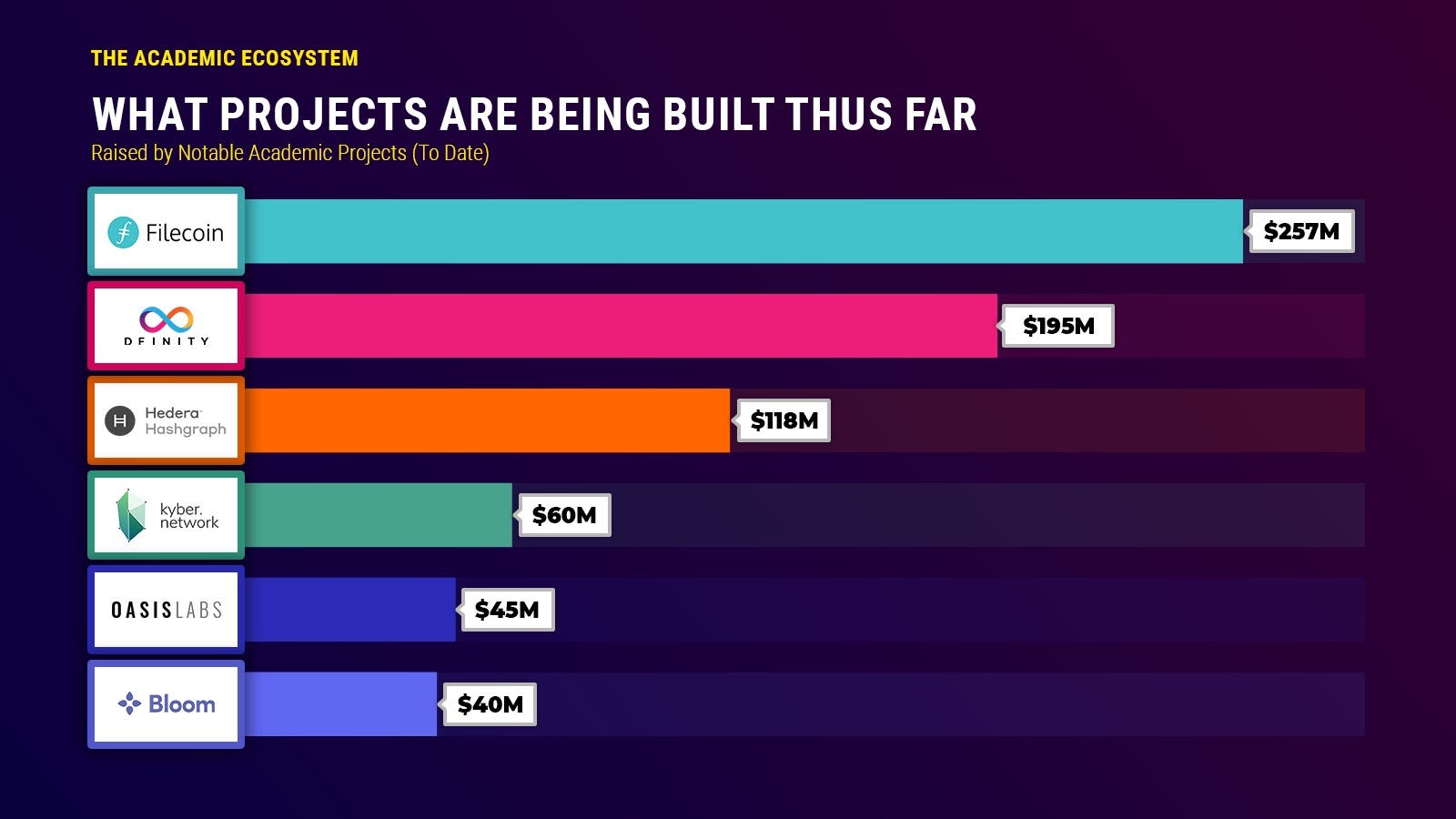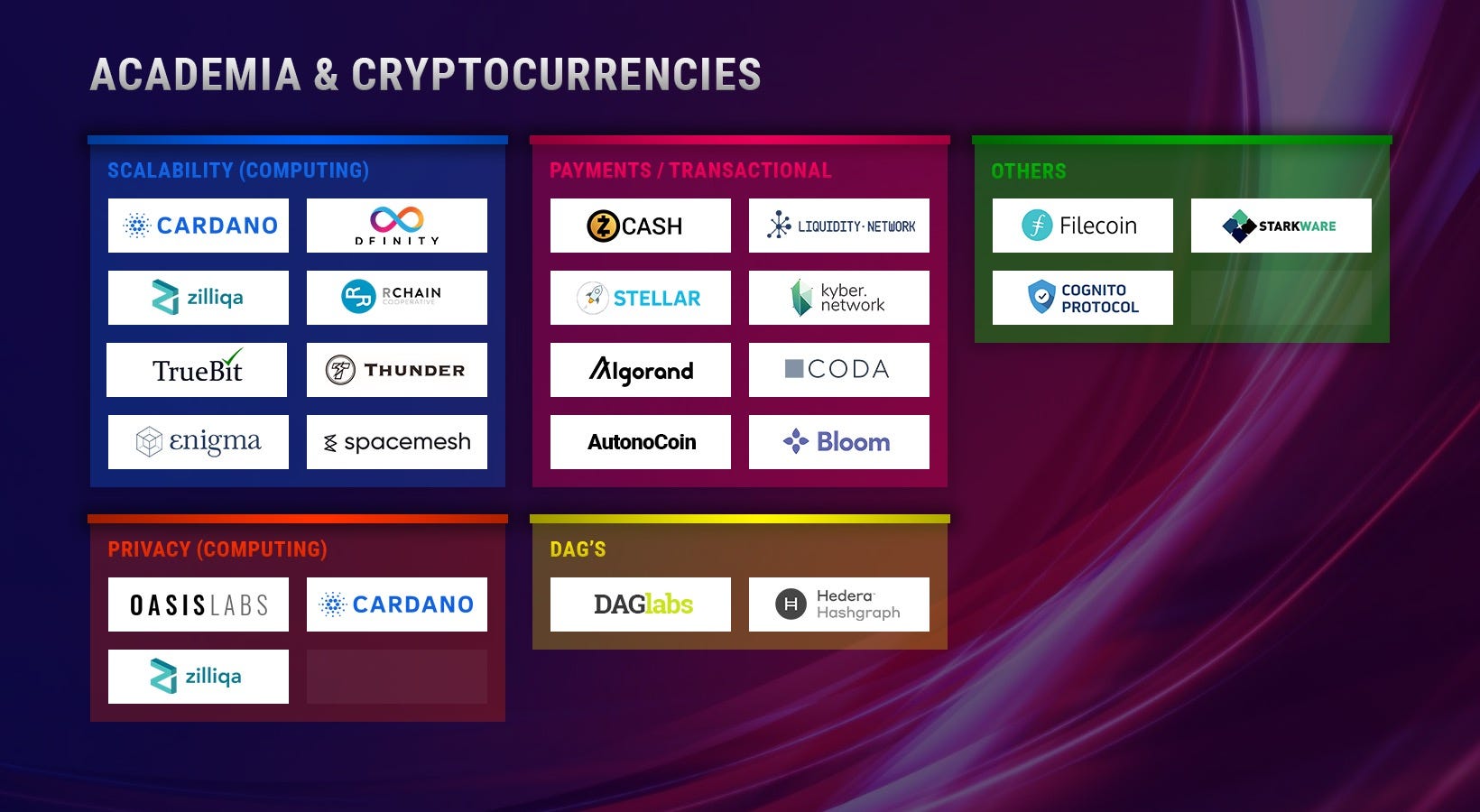The Importance of Academia
By: Wesley Graham and Ronen Kirsh
Technological limitations associated with scalability, privacy, and interoperability currently limit much of today’s most important blockchain infrastructure. Many investors believe that the solutions to these limitations will be sourced from the world of academia: home of cutting-edge discoveries and many leading cryptography and distributed systems experts.
As such, this article provides a glimpse into the progress being made by the world’s most talented blockchain researchers, academics, and thought leaders. We clarify what projects are being built, what schools are leading the charge, and where some of the next waves of contributions will be emerging.
What is an “Academic” Project?
We consider an academic blockchain project to be:
a) A qualitative contribution towards addressing one or more pain points currently present in the blockchain ecosystem
b) An effort led and guided by university graduate students and professors
c) A project that has successfully completed its initial round of funding
Academic projects traditionally encompass projects founded by professors and researchers, but can also include active PhD’s and others with high levels of domain expertise. Academic projects in the context of this article are additionally considered to be projects that funds or other investors can invest in, built using distributed ledger technology.
The Academic Ecosystem — What Projects are Being Built Thus Far?

Most of today’s influential academic-led projects fall under the realm of “payment infrastructure” (i.e — liquidity networks), “protocols” (i.e — privacy-preserving technologies), or “platforms” (i.e — digital currencies/smart contract solutions). The range of solutions primarily resides in the fields of scalability and privacy, with other notable projects addressing the problems of storage, security, and distributed consensus.
One of the more active areas of investment in today’s academic ecosystem is smart contract platforms. Projects like Dfinity ($61M), Zilliqa ($22M), and Spacemesh have garnered significant media attention alongside their success in raising capital.
This increase in smart contract investment is likely a result of Ethereum’s continued battle to solve scalability and security issues, which has led to a search for alternative platforms better suited for large-scale adoption (see this well-written article by StopAndDecrypt for more context on this issue).
Projects like Oasis Labs, which raised $45M earlier this year, aim to address Ethereum’s drawbacks, with the goal “to overcome the performance, security, and privacy limitations [of smart contract platforms] that have hampered blockchain adoption to date.” The project’s combination of “smart enclaves” and performant smart contract execution uniquely positions the venture to address both privacy and scalability concerns, leading to traction in the greater blockchain community.
Outside of smart contract platforms, notable work has occurred in the realm of key “infrastructural layers” — low-level storage, payment, and privacy tools useful for real world applications.
Projects like Filecoin, a decentralized storage network, made headlines over the last year with record breaking raises ($257M), while projects like Starkware, a team researching and implementing zkSTARKs, have led pioneering research and development on existing projects like Ethereum and ZCash.
The Professors — What Schools Have Projects Been Coming From

Many academic-driven developments come from an eclectic mix of professors from traditional “prestigious” universities as well as technology hubs. These include active developments from professors at schools like Cornell (Thunder Core, Spacemesh, & IC3), and MIT (Algorand, Enigma, & Zerocoin), as well as international schools like the National University of Singapore (Zilliqa & the Kyber Network) and the University of Oxford (IOHK).
Over the last twelve months in particular, a substantial amount of development has occurred in the Bay Area, with schools like UC Berkeley (home to the founders of Oasis Labs, ZCash, Starkware, and Coda) and Stanford (creators of Stellar, Filecoin, Bloom, and Cognito) establishing a considerable presence in the space.
Recently, many projects have been emerging from academic hubs in Israel, primarily due to the efforts of researchers from ZCash, Starkware, and Phantom. Projects like Spacemesh, led by faculty at the Interdisciplinary Center (IDC) Herzliya, and DAG Labs, led by faculty at the Hebrew University of Jerusalem, have proposed unique approaches to scalability through the lens of both novel consensus algorithms (Spacemesh’s Proof of Space Time) and data structures (DAG Labs’ Directed Acyclic Graphs).
It is also interesting to note that angel investors, VC’s, and hedge funds alike have begun actively pursuing investment in this field, and has joined Dekrypt Capital as early-stage investors in a number of the projects listed above.
The Role of Academia Going Forward
Going forward, we are excited about the role of academia in building future blockchain infrastructure.
In order to place cutting edge tools in the hands of billions of people, the underlying technology supporting these tools must be as close to perfection as possible. The intense public scrutiny and revision that academics face can be considered one of the most effective screening factors when cultivating the next wave of blockchain pioneers.
As academics begin to perfect their technology and “scale up” we encourage founders to reach out and seek entrepreneurial expertise. We believe academics who onboard experienced entrepreneurs and seek assistance from proven early-stage investors possess a strong competitive advantage over those who do not. Dekrypt actively supports academic teams, and have been impressed by the innovative projects emerging from college campuses to date.
Summary
As we continue to see interest in academia-driven projects grow, we believe more usable infrastructure will make its way into future application.
These graphics serve as starting points for a deeper discussion on academia’s role in this space, and will be amended with suggestions of other emerging projects (please comment your schools and projects below!!).
Thank you to Jon Allen, Howard Wu and the rest of the Dekrypt team for valuable insights and input on this article.
Leave a Reply